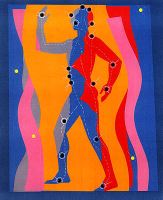 A recurring theme in acupuncture studies is the difficulty (dare I say inability) in distinguishing between the real thing and sham acupuncture. An example in patients with fibromyalgia (FMS) is here. Other conditions with the same problem are here, and here.
A recurring theme in acupuncture studies is the difficulty (dare I say inability) in distinguishing between the real thing and sham acupuncture. An example in patients with fibromyalgia (FMS) is here. Other conditions with the same problem are here, and here.
Now, Drs. Thomas Lundeberg and Irene Lund from the Karolinska Institutet in Stockholm, Sweden provide a rationale for the conundrum.
In recent reviews of FMS studies, acupuncture reportedly had no specific effect since the control procedure (superficial needling and/or needling away from “specific” points) had similar effects. According to Drs. Lundeberg and Lund “These conclusions may be questioned since superficial needling and/or needling away from specific trigger points is not inert.”
How can this be?
Patients with FMS suffer from allodynia (pain from a non-injurious stimulus to the skin), fatigue, and muscle ache. This is explained, in part, by peripheral and central sensitization, which results in augmented and altered responses whereby mild stimulation of the skin has as strong an effect on the pain inhibitory system as regular needling.
FMS is also associated with expanded receptive fields for central nerves, which result in a broader topical distribution of the pain. Thus, needling away from the “specific site” has the potential to have as strong an effect as needling within the most painful area.
The authors also refer to other neurological reasons that might explain the “effectiveness” of sham acupuncture.
The bottom line?
There’s likely to be an imbalance between excitatory and inhibitory nerve systems in FMS. With that in mind, “stronger stimulation may therefore be needed to activate the descending pain inhibitory system” and make it possible to distinguish real from sham acupuncture in patients with FMS.
The authors conclude, “If this is so, then studies that use mild manual acupuncture or weak electro-acupuncture might not elicit a response. When conducting studies on acupuncture, the clinical condition or syndrome needs to be taken into account and the control procedure designed accordingly.”
10/3/07 00:05 JR